Seven Perennial Soil-Building Plants
These workhorses are beautiful and functional
Seven Perennial Soil-Building Plants
These workhorses are beautiful and functional
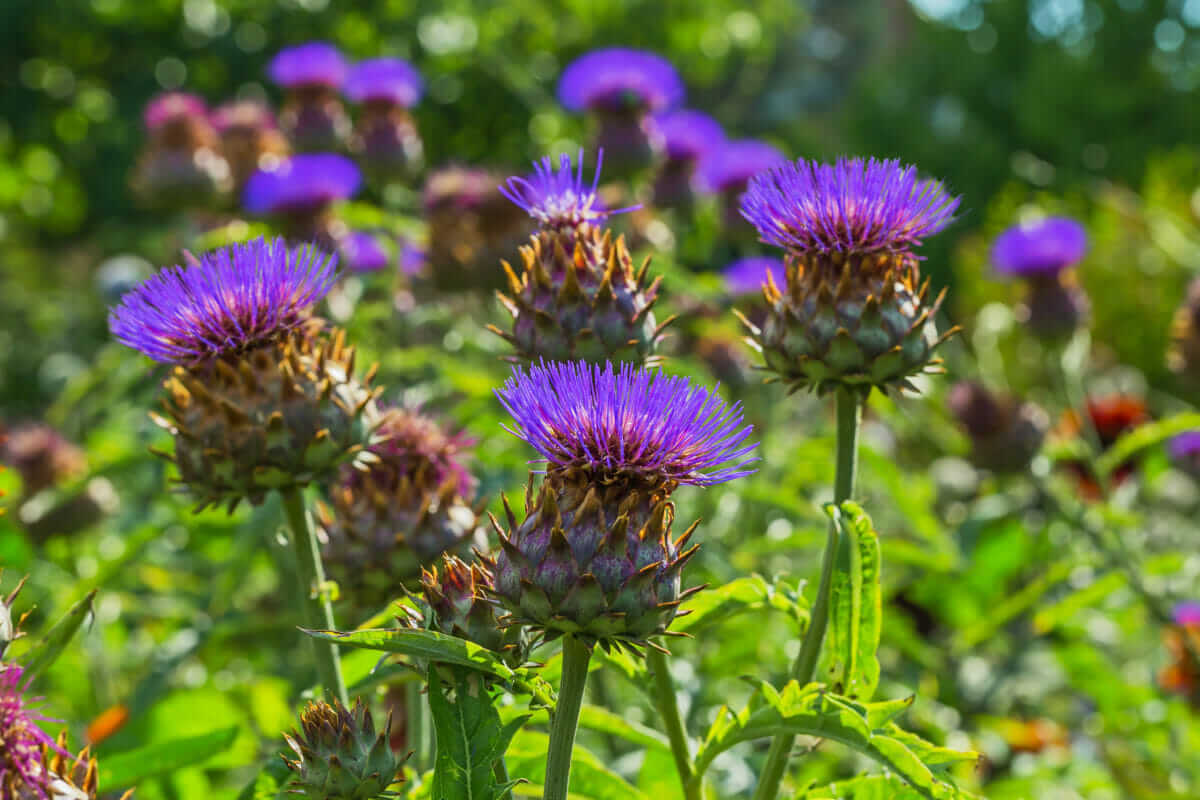
But there are also perennial soil-building species, which can be cut for “biomass” several times each year to either be used as a composting material, or to place directly on the ground as mulch. These species are particularly useful in small scale homestead-style gardens where fruits, nuts, berries, and flowers are grown in addition to traditional annual crops.
What qualifies a plant as a soil-builder?
These are plants that thrive in relatively poor soil, produce a prolific amount of biomass (a fancy word for foliage), and quickly improve the soil quality. Many species that have earned this moniker are also known for deep, powerful taproots, which break up hard subsoil, as a well as an ability to accumulate nutrients in their tissues – nutrients that can be made available to other plants when the soil-building species is cut and left to decompose.
Soil builders must respond well to being constantly pruned back. Some perennials are stunted by being cut back on a regular basis; soil builders, on the other hand, are species that regrow even more profusely each time they’re trimmed. These plants are typically planted along the border of a food garden as a hedge, but the smaller species are also suitable for planting beneath fruit trees, where they are perfect for the “chop-and-drop” method: cut off a handful whenever you go by and let the biomass decompose in place on top of the soil, where it acts as a moisture-conserving mulch in the short term, and adds organic matter and nutrients to the soil in the long term.
Let’s get to our list.
Comfrey (Symphytum officinale)

Often considered the king of soil-building plants, the roots of comfrey, a plant that grows less than 2 feet tall, are known to burrow 6 feet or more into the earth, essentially mining the subsoil for nutrients that are unavailable to other plants, which are then concentrated in the foliage. Growing in a low dense clump with leaves up to two feet in length, comfrey produces an armful of biomass in a few months. Once established, you can cut it to the ground and within weeks it will regrow into another shrubby mass. It is easily propagated from root cuttings. USDA zones 3 to 9.
Empress Tree (Paulownia tomentosa)
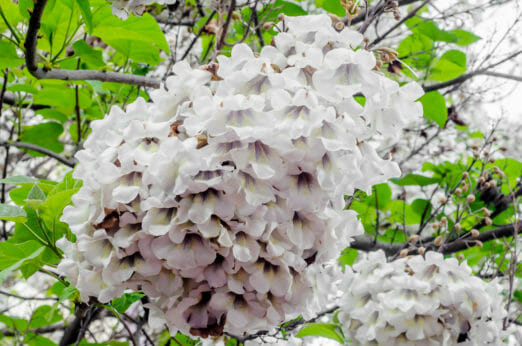
This tree, which has gorgeous purple flowers and heart-shaped leaves the size of a dinner plate, will eventually grow to more than 40 feet in height, but you can maintain it as an eight-foot shrub if you cut it back every few months. After being cut back to the ground, a thicket of new shoots emerges from the stump with even larger leaves (up to 2 feet across) that make a copious addition to the compost pile. Be forewarned, however, that in some areas this species seeds itself prolifically and can become invasive. Saplings are widely available online. USDA zones 5 to 9.
Cardoon (Cynara cardunculus)
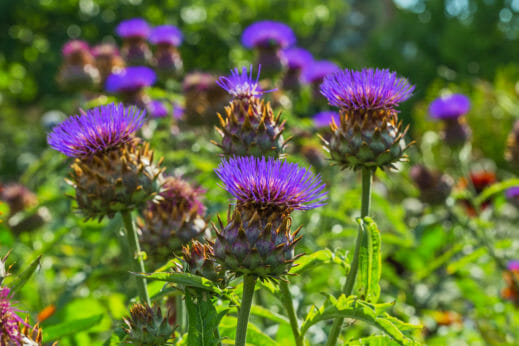
This edible soil builder is closely related to artichokes, but instead of eating the unopened flower bud, you eat the blanched stems. Cardoon is a striking Mediterranean plant that grows as a leafy six-foot tall clump, producing an astonishing amount of foliage each year, which is topped with fist-sized purple flowers that resemble a thistle. Grow it from seed or purchase seedlings online. USDA zones 7 to 9.
Stinging Nettles (Urtica dioica)
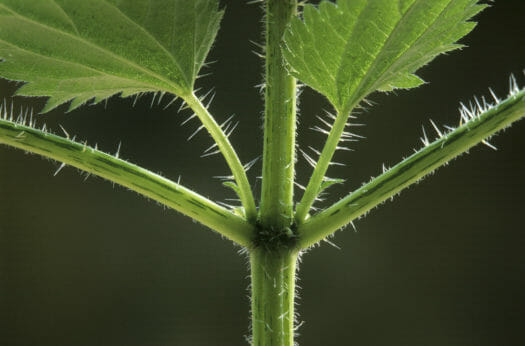
Like comfrey, nettles are known as a nutrient accumulator. This plant is a little more complicated to grow, however, as it is covered with tiny hairs that give a mild “sting” if you brush up against them with your bare skin. So it’s not recommended as a garden plant, but it is a native species suitable for cultivation in naturalized areas on rural properties. It grows in sun or shade, but likes lots of moisture. When you’re ready to make a new batch of compost, protect yourself with gloves and thick, long-sleeved clothing and cut the nettle patch to the ground – it will regrow profusely from the underground rhizomes. Grow from seed, USDA zones 3 to 10.
‘Mammoth’ Red Clover (Trifolium pratense)
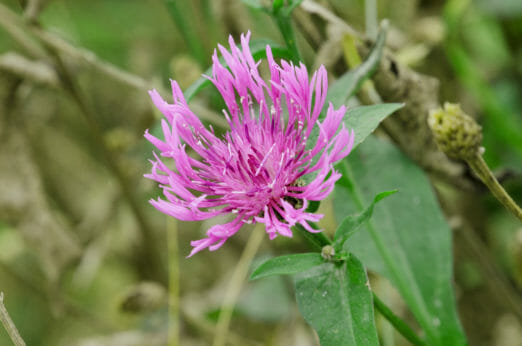
Mammoth is a cultivar of the common red clover plant, which bears lush leafy stalks up to three feet in height and has dazzling red flowers. Like other clovers commonly grown as cover crops, red clover is a “nitrogen-fixer,” meaning it converts nitrogen from the atmosphere into a soluble form that other plants can absorb through their roots. Each time you cut red clover to the ground to harvest biomass for mulch or compost, some of the little nitrogen-making nodules on the roots die off, releasing their nutrients into the surrounding soil. Compared to most other plants, the foliage of clovers (and other legumes) also contains above average nitrogen for your compost pile. Grow from seed. USDA zones 3 to 9.
Bush Indigo (Amorpha fruticosa)
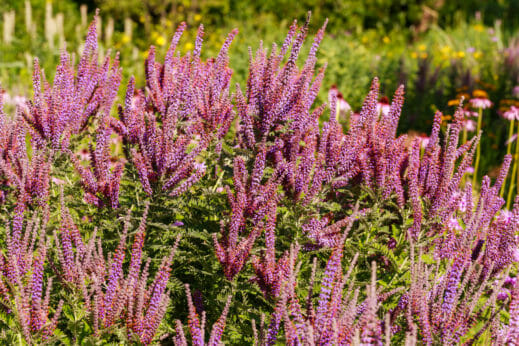
This leguminous shrub, also a nitrogen-fixer, grows quickly to eight feet tall and wide, and can be cut back again and again, yielding wheelbarrow loads of biomass. Virtually indestructible, it prefers moist, partly shaded locations, and is native to forests throughout much of the United States. Grow from seed. USDA zones 4 to 9.
Siberian Pea Tree (Caragana arborescens)
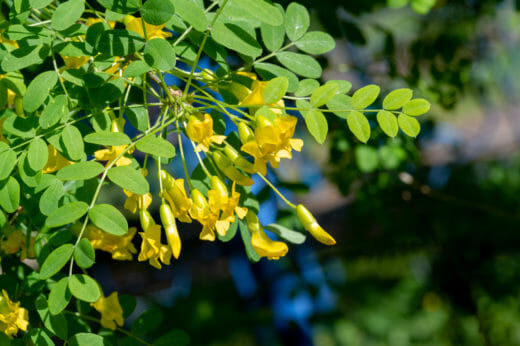
A tough and hardy soil builder, this nitrogen-fixing legume matures into a small tree with yellow flowers, but is easily maintained as a 6-foot shrub if you cut it back on a regular basis. It fairs poorly in hot climates, but is one of the best soil builders for cold, northerly places. Seedlings are widely available from mail order nurseries. USDA zones 2 to 7.
Follow us
This work is licensed under a Creative Commons Attribution-NoDerivatives 4.0 International License.
Want to republish a Modern Farmer story?
We are happy for Modern Farmer stories to be shared, and encourage you to republish our articles for your audience. When doing so, we ask that you follow these guidelines:
Please credit us and our writers
For the author byline, please use “Author Name, Modern Farmer.” At the top of our stories, if on the web, please include this text and link: “This story was originally published by Modern Farmer.”
Please make sure to include a link back to either our home page or the article URL.
At the bottom of the story, please include the following text:
“Modern Farmer is a nonprofit initiative dedicated to raising awareness and catalyzing action at the intersection of food, agriculture, and society. Read more at <link>Modern Farmer</link>.”
Use our widget
We’d like to be able to track our stories, so we ask that if you republish our content, you do so using our widget (located on the left hand side of the article). The HTML code has a built-in tracker that tells us the data and domain where the story was published, as well as view counts.
Check the image requirements
It’s your responsibility to confirm you're licensed to republish images in our articles. Some images, such as those from commercial providers, don't allow their images to be republished without permission or payment. Copyright terms are generally listed in the image caption and attribution. You are welcome to omit our images or substitute with your own. Charts and interactive graphics follow the same rules.
Don’t change too much. Or, ask us first.
Articles must be republished in their entirety. It’s okay to change references to time (“today” to “yesterday”) or location (“Iowa City, IA” to “here”). But please keep everything else the same.
If you feel strongly that a more material edit needs to be made, get in touch with us at [email protected]. We’re happy to discuss it with the original author, but we must have prior approval for changes before publication.
Special cases
Extracts. You may run the first few lines or paragraphs of the article and then say: “Read the full article at Modern Farmer” with a link back to the original article.
Quotes. You may quote authors provided you include a link back to the article URL.
Translations. These require writer approval. To inquire about translation of a Modern Farmer article, contact us at [email protected]
Signed consent / copyright release forms. These are not required, provided you are following these guidelines.
Print. Articles can be republished in print under these same rules, with the exception that you do not need to include the links.
Tag us
When sharing the story on social media, please tag us using the following: - Twitter (@ModFarm) - Facebook (@ModernFarmerMedia) - Instagram (@modfarm)
Use our content respectfully
Modern Farmer is a nonprofit and as such we share our content for free and in good faith in order to reach new audiences. Respectfully,
No selling ads against our stories. It’s okay to put our stories on pages with ads.
Don’t republish our material wholesale, or automatically; you need to select stories to be republished individually.
You have no rights to sell, license, syndicate, or otherwise represent yourself as the authorized owner of our material to any third parties. This means that you cannot actively publish or submit our work for syndication to third party platforms or apps like Apple News or Google News. We understand that publishers cannot fully control when certain third parties automatically summarize or crawl content from publishers’ own sites.
Keep in touch
We want to hear from you if you love Modern Farmer content, have a collaboration idea, or anything else to share. As a nonprofit outlet, we work in service of our community and are always open to comments, feedback, and ideas. Contact us at [email protected].by Brian Barth, Modern Farmer
July 3, 2018
Modern Farmer Weekly
Solutions Hub
Innovations, ideas and inspiration. Actionable solutions for a resilient food system.
ExploreExplore other topics
Share With Us
We want to hear from Modern Farmer readers who have thoughtful commentary, actionable solutions, or helpful ideas to share.
SubmitNecessary cookies are absolutely essential for the website to function properly. This category only includes cookies that ensures basic functionalities and security features of the website. These cookies do not store any personal information.
Any cookies that may not be particularly necessary for the website to function and are used specifically to collect user personal data via analytics, ads, other embedded contents are termed as non-necessary cookies.
Never ever recommend empress tree highly invasive!
Somebody doesn’t know their red clover from their centaurea. The picture.
What is wrong with you? Have you stopped to think that most of this stuff is not native to most of the US? If it’s not native don’t introduce it. This is really irresponsible. “Beautiful and functional” is not the goal.
Dhow does Turkey Tangle rate? Does Turkey Tango build up a good root system ? Cattail Bob’s books recommend it for borders with slight slope, to keep wood chips from washing away.
What about Turkey Tangle in Colorado?